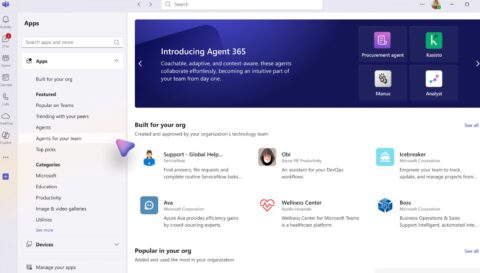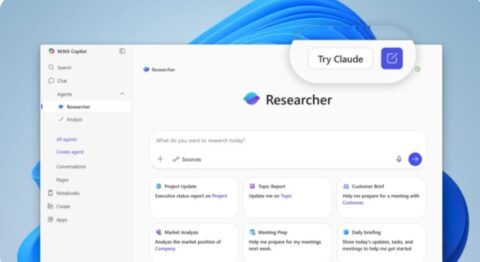Updated: August 5, 2024 (August 5, 2024)
BlogCIO Talk: ‘Agentic’ AI: More than just smarter workflows?

These days a lot of AI hype is centered around what is being called “agentic” AI, which is the first time I’ve encountered the adjective form of the word “agent.” The idea seems to involve using LLM-powered “agents” to autonomously perform tasks, typically as part of some larger business process (a workflow).
As an example, Microsoft Research’s Project Autogen suggests that workflows can consist of “multiple agents [that] can converse with one another,” that is, LLM-powered agents negotiate, connect to software tools, write code, and so on, to accomplish business goals.
Is this abstraction useful? Maybe…
What’s really new here?
Now for anyone who’s been in the enterprise software business for a while, like me, there’s a lot to be skeptical about. And I’ll admit that my eyebrows furrowed a bit when I heard the term “agentic,” because:
Agents have been around forever. In the early ’90s (for example) we created a whole platform for server-based agents in Lotus Notes that could do things like automagically categorize email, and things like that. Lots of other systems have deployed agents in similar ways for similar tasks.
Workflows have been around also forever. In fact, as I have argued, businesses are nothing more than collections of business processes, i.e., workflows. So what’s a workflow? As I wrote some years ago in an article entitled “The Laws of Business Process,” it’s just a stepwise set of activities that accomplish a business goal, starting with an event of some sort (“order received”), followed by some number of tasks (“check inventory,” “send email to customer,” etc.) and often including some sort of decision logic (“if out-of-stock, then…else…”). You can assign attributes to these – cost, human or automated task, and so on, to do prediction and analysis. But I digress.
And while Microsoft was slow to the workflow game in the 2000s, with Power Automate and Logic Apps they now have compelling offerings (arguably one too many, but that’s for a different post).
But let’s think for a second about the canonical business process:
On order received for product
Check inventory on product
If product in stock
Ship product
Decrement inventory
So why do you need AI for a process like this?
Maybe you don’t. Here we have a process which is very deterministic, does not have any particular dependence on natural language processing, and is highly automated, that is, requires almost no human interaction. A lot of processes are like that; in fact, for financial workflows, like SWIFT, which moves literally trillions of dollars every day, you absolutely want the determinism good old-fashioned code gives you — and not the probabilistic behavior of an LLM.
So … What, exactly, is ‘Agentic’ AI?
Other types of processes, however, have uses for natural language. So perhaps we should think of LLMs not as replacing current notions of business process, but as enhancing them.
For example, one use case in which an LLM-powered “agent” would be extremely useful is in customer service, in which a customer calls or writes with a question. As implemented in Dynamics 365 Customer Service, an LLM can help reps distill incoming questions to their essential elements to quickly find an answer. And of course, an LLM could power an Interactive Voice Response (IVR) system with much more satisfying and pleasing results than today’s typical “press 1 to repeat these options” systems (in theory, as I have yet to experience this).
Not only that: LLMs, as a friend at Microsoft told me, are also exceedingly — maybe even surprisingly — good at decoding error messages, say, from software or data center hardware or IoT devices. And they can often determine remediation faster, my friend claimed, than a human Site Reliability Engineer (SRE).
The point of all this is that there may well be a place for LLM-powered agents. Are they a panacea? Do they replace everything we’ve ever done with agents and workflow? Certainly not. But we can get some improved functionality, which is all we can ask of our software. We’ve all seen this phenomenon before: A new technology is accompanied by massive hype, then after the dust settles, it finds its rightful place in the technology ecosystem.
What do you think? Is there more than hype when it comes to Agentic AI? Drop me a line at bbriggs@directionsonmicrosoft.com.
Related Resources
Microsoft Project Autogen: Multi-Agent Conversation Framework
Dynamics 365 Contact Center Leverages Copilot, Consolidates Offerings (Directions members only)
Directions on Microsoft Deep Dive: What Is The Power Platform?















